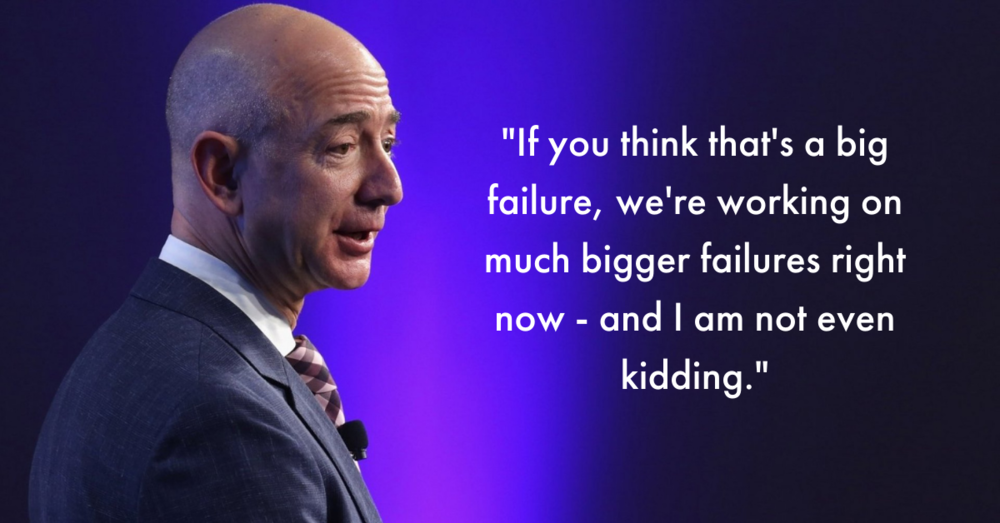Pretotyping: the key to using Amazon’s innovation method when you’re NOT Amazon
When it comes to innovation, an easily identifiable example of excellence is Amazon: led by Jeff Bezos, this powerhouse of ideas has changed the face of eCommerce and invention the world over. Expectations surrounding delivery and customer support have been elevated to stratospheric heights, and the new innovations just keep on coming.
It’s well-known that experimentation sits at the heart of Amazon’s incredibly successful innovation engine. Similarly to pretotyping, central to Amazon’s philosophy is the idea that to innovate, you need to run as many experiments as you can as quickly as possible - and you need to embrace failure in the process. As Jeff Bezos himself says: If you’re not failing, you’re not innovating enough.
With all their success (and immense profit), you might be wondering how on earth we could be able to suggest that pretotyping could improve their method; the truth is, it probably wouldn’t make too much difference at Amazon itself.
But for other companies who want to mirror their success, but don’t have Amazon’s infrastructure, budget, appetite for failure, or huge innovation teams? That’s where we come in.
Working Backwards.
Before we get into how pretotyping can help improve Amazon’s method, we need to look at how their innovation process works, and why it doesn’t work anywhere else but at Amazon.
Within the walls of Amazon’s innovation offices, their teams use a method called “Working Backwards.” The method is basically what it sounds like: they start by writing a press release, as if the product or service has already been built and is ready to be handed over to the public. Though the team addresses this release to their target consumers, it’s rare that actual customers will see it; this exercise determines whether or not the development team is excited enough about the idea to actually build the thing. If they are, they then develop a plan of the work that needs to be done, get approval from stakeholders, assign the tasks and get to work.
At first glance, this seems like a great plan: you and your team come up with an appealing product story that’s ‘customer-centric’, decide if you’re excited and then start building - sounds fun right?
We’re sure it is, and we admit, it does work - for Amazon, but try to bake the same soufflé with slightly different settings and it deflates pretty quickly. Why? Because Amazon, from its inception, has fostered an ideas-based environment: the culture has been cultivated to encourage all kinds of ideas, constant experimentation and collaboration, all the while having the resources to allow for catastrophic failure (Fire Phone, anyone?).
It’s about the culture.
When it comes down to it, Working Backwards relies on the unique DNA within Amazon’s systems. It is less a process than a product of an extremely experimental and forgiving company culture. As no two sets of DNA can be the same, those trying to replicate it rarely succeed, as they’re missing the support system which would bridge the gap between Amazon’s method and their own DNA.
Many businesses have tried to imitate Amazon’s success and have failed to do so, because they are not Amazon. Trying to implement this kind of thought process within an established company is very difficult because, as with pretotyping, you have to convince all of your employees that failure is a good thing, after years of telling them otherwise.
Not only do most other companies not have the right kind of culture, they also don’t have the resources to not only build and release multiple disastrous products, but to write them off after only a few months with barely a dent in their profit margins.
Pretotyping: a scaffolding method.
This is where pretotyping comes in, with the aim of allowing your company to harness the success of Amazon, without actually being Amazon or Jeff Bezos.
In this instance, pretotyping, alongside Working Backwards, stands as a way of scaffolding the process in order to slow and bridge the jump between the press release and building the product. It pauses the method early, allowing teams to brainstorm their solutions and ideas, adding in another step before the team jumps in to building: validation.
Pretotyping asks the questions that are missing in Working Backwards, adding the key step that is needed for anyone other than Amazon to make use of the method: Sure, it’s a great idea, but how do we know that the customers will even use it? Where is your data?
Whilst it’s fun to get lost in Thoughtland occasionally, we all know that data is central to innovation, especially when you don’t have time or funds to waste. Pretotyping, paired with Working Backwards, allows you to have the best of both worlds: the chance to experience the joys of Thoughtland whilst also providing you with the tools to escape, to fail early and to prove which of your ideas will actually work. Not everyone has the luxury of writing off millions of dollars worth of product and stating “If you think this is a failure, you should see the failures we’re working on now.”
*
Ready to integrate pretotyping into your innovation process? Contact Leslie to discuss training for your team or company, or sign up for a free preview of our online pretotyping course.


